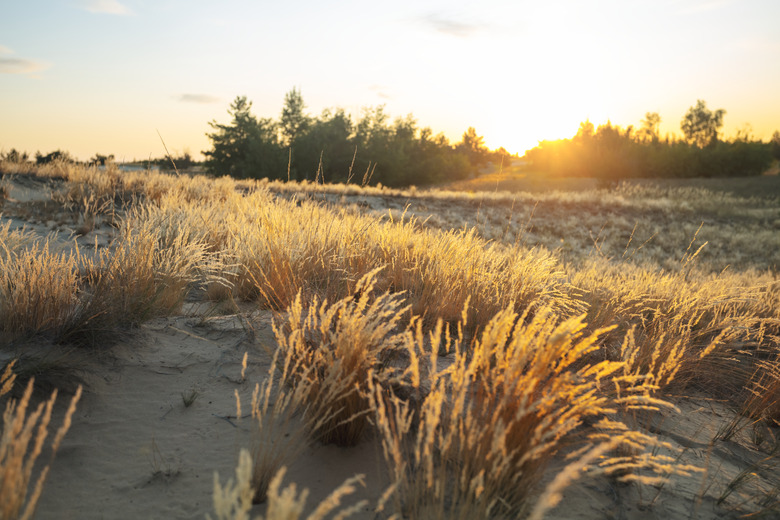What Are Two Different Habitats In A Prairie Ecosystem?
The prairie ecosystem was once the primary ecosystem between the Rocky Mountains and the Mississippi River. In the east were tall grass prairies, and on the west were short grass prairies. Dotting both were mixed prairie ecosystems. Today there is little left of these vital ecosystems. The importance of these grasslands is now recognized, and efforts to restore and maintain them are being waged throughout these endangered areas.
About Prairie Ecosystems
About Prairie Ecosystems
Prairie ecosystems are among the most bio-diverse ecosystems on Earth. There are few trees in these systems. The plant life consists mostly of weather-resistant grasses, wildflowers and woody plants with extensive root systems. These plants maintain and enrich soil, prevent erosion and provide a habitat for numerous species of animal life. The flora and fauna of the prairie lands create an intricate food web that can be easily destroyed as species die off from habitat destruction. More than 50 species that depend on prairie ecosystems for life are now endangered or rapidly becoming so.
Tall Grass Prairies
Tall Grass Prairies
Tall grass prairies are the wettest of the prairie systems, receiving 30 inches to 40 inches of rain a year. Switch grass, bluestem, Indian grass and wildflowers in these prairies grow rapidly and to heights of 8 feet. They are habitat for buffalo, antelope and other grazing animals. They are wetlands for birds and small mammals. These lands were left untouched until settlers discovered the richness of the soil and began cultivating them. Now only 1 percent of these prairies remains, according to the Nature Conservancy .
Short Grass Prairies
Short Grass Prairies
The short grass prairie plants to the west of the tall grass regions are hearty, weather-resistant plants adapted to these dry regions that get only about 15 inches of rain a year. Bluegrass, buffalo grass, cactus, wildflowers and woody plants such as sagebrush dominate the short grass prairies and support a vast variety of mammals, birds and reptiles. These prairies are succumbing to heavy cattle grazing and fencing.
Conservation Efforts
Conservation Efforts
Conservation efforts seek to maintain vital prairie ecosystems. Remaining tall grass prairies are being maintained by designating reserve areas. Areas destroyed by agriculture are being replanted in their natural grasses, which are more economical in ethanol production and revitalize rather than destroy animal habitats. Scientists have found that saving isolated patches of prairie land will not be enough and that a continuum of grasslands must be restored to achieve ecosystem balance. Prairies are being reserved and restored through a cooperative effort by government agencies, land owners and conservation groups.
Cite This Article
MLA
Taylor, Sally. "What Are Two Different Habitats In A Prairie Ecosystem?" sciencing.com, https://www.sciencing.com/info-8074788-two-different-habitats-prairie-ecosystem/. 22 November 2019.
APA
Taylor, Sally. (2019, November 22). What Are Two Different Habitats In A Prairie Ecosystem?. sciencing.com. Retrieved from https://www.sciencing.com/info-8074788-two-different-habitats-prairie-ecosystem/
Chicago
Taylor, Sally. What Are Two Different Habitats In A Prairie Ecosystem? last modified August 30, 2022. https://www.sciencing.com/info-8074788-two-different-habitats-prairie-ecosystem/
